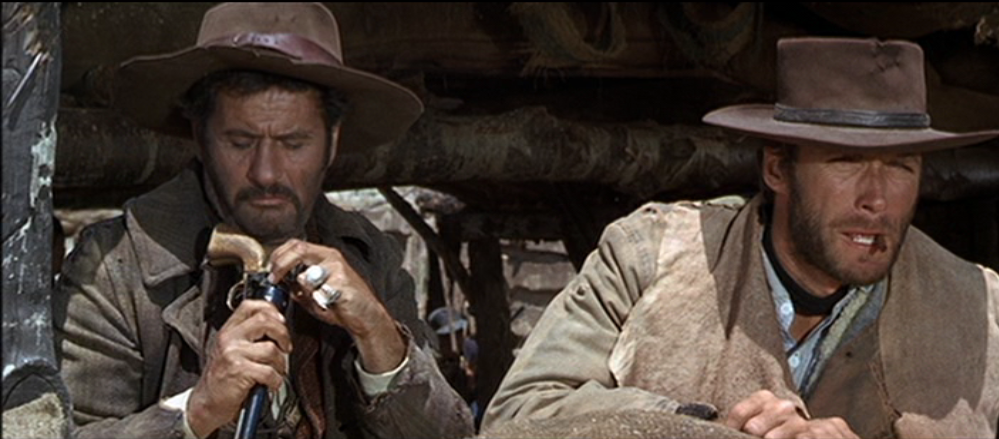Movie Review: The Good, the Bad and the Ugly (1966) directed by Sergio Leone
Our title characters are introduced in reverse order. The Ugly, Tuco (Eli Wallach), is an outlaw with a price on his head, guilty of a long list of crimes that have more than earned him a hanging. He’s a survivor who’s always thinking of his own hide and interests. The Bad, Angel Eyes (Lee Van Cleef), is a hired killer who’s discovered a bigger payday than his client had hinted. And the Good, Blondie (Clint Eastwood), is the Man with No Name, whose goodness is shall we say relative?

Tuco and Blondie are running a scam where Blondie turns Tuco in for the bounty money, then saves his partner from the noose at the last moment. Blondie is smart enough to quit while they’re ahead, but keeps all the money from their latest sting and strands Tuco in the middle of nowhere. Tuco is understandably enraged and seeks revenge. However, just as he’s about to finish Blondie off, they learn clues about the location of the chest of gold Angel Eyes has been searching for. Since they now each need each other to get the big score, they must now cooperate.
However, they soon stumble upon Angel Eyes’ trap for the original thief, and the killer learns half the secret. Now a series of side-switches and double-crosses will lead all three men to a final showdown.
Oh, and I should mention that this is all happening in 1862, during the Arizona campaign of the American Civil war, so the Confederate and Union Armies are fighting all around this.
This was the third film Sergio Leone made with Clint Eastwood, and the most epic. The American importers were the ones who decided to market all three films as though Clint’s character was not just a very similar type, but actually the same person. In which case, this is a prequel to the other films which take place after the Civil War.
Ennio Morricone wrote the soundtrack music, which is excellent, especially when it switches up to a soft, beautiful piece the Confederate prisoners of war are forced to play to cover up the sounds of Tuco being tortured by Angel Eyes and his goons.
Lots of great visual sequences, long non-speaking scenes and nifty dark humor, particularly from Tuco. Speaking of which, we learn the most about Tuco of the three main characters. We meet his old friends and his estranged brother, and his version of why he became a criminal. Even though he’s a bad person, we can sympathize with Tuco a bit, as opposed to the cold Angel Eyes.
In addition to the aforementioned torture, there are a couple of ugly wounds on display, and some male nudity. (There are almost no women in the movie and they’re all fully clothed bit parts.)
The restored version runs almost three hours, and is not for the impatient.
One of the great Westerns, worth seeking out if you haven’t previously seen it.

